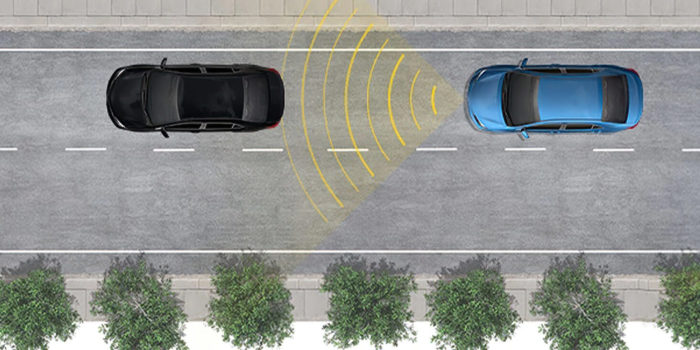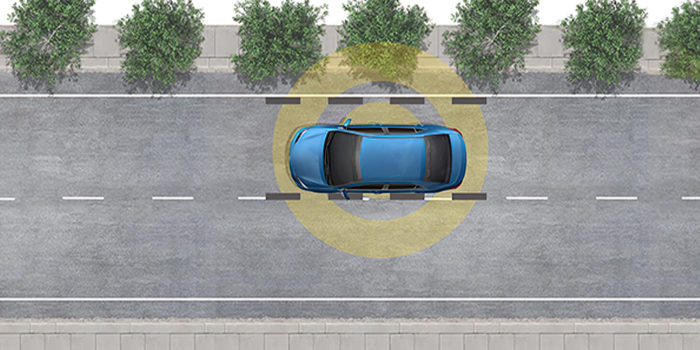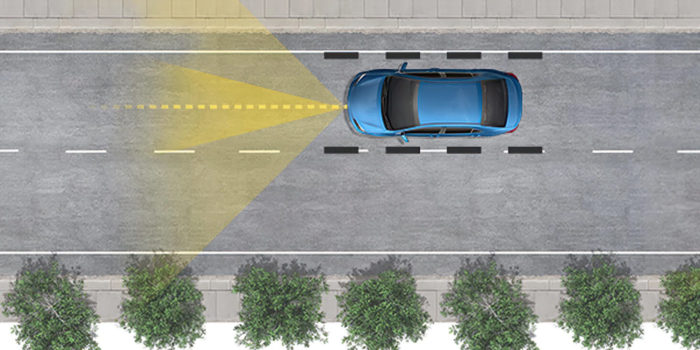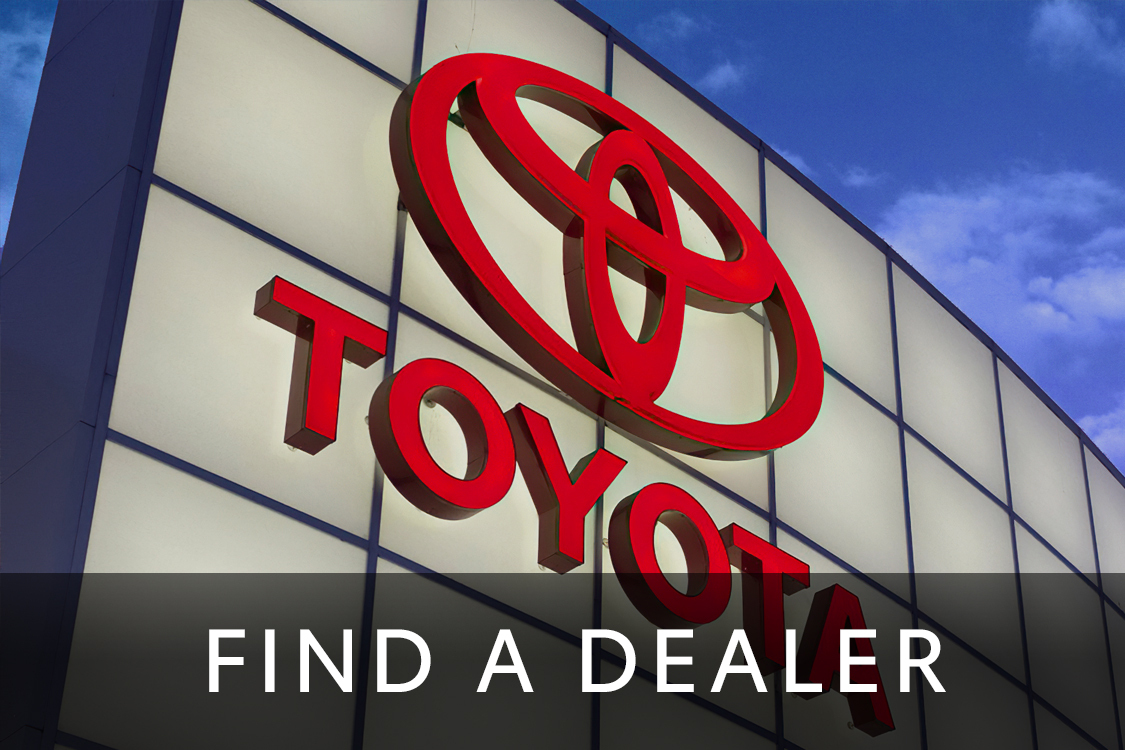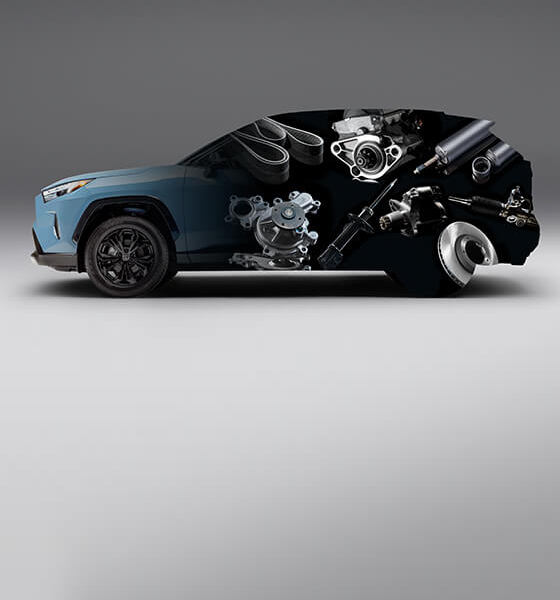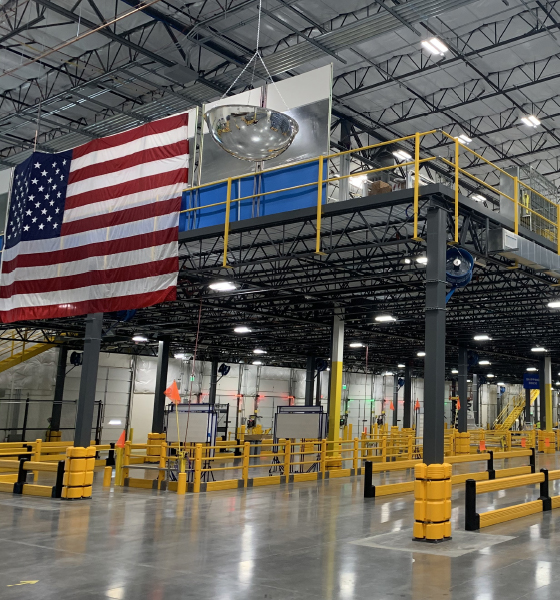
THE REPAIR—ADAS AND TOYOTA GENUINE PARTS (Part Two)
“Some of the most frequently damaged parts during a collision are system which incorporate today’s Advanced Driving Assistance Systems (ADAS).”
Toyota Genuine Parts replacement parts are built to the same specifications as the original parts in a new Toyota vehicle. That means they fit right the first time, deliver the same quality and performance as the original parts, and adhere to industry quality standards. Importantly, when a Toyota comes into your shop, you need to be aware of the Toyota Safety Sense (TSS)1 features that came on that vehicle and how your repairs may or may not affect the performance and fit of the incorporated Advanced Driving Assistance Systems (ADAS)1.
Some of the most frequently damaged parts during a collision are systems that incorporate today’s ADAS. In this article, we review why replacing damaged parts with Toyota Genuine Parts helps to ensure that the ADAS will perform as designed by Toyota.
TOYOTA SAFETY SENSE™ (TSS) FEATURES
Today’s Toyota vehicles are available with a variety of ADAS, which are part of TSS.
These can include:
- Pre-Collision System with Pedestrian Detection (PCS w/PD)2
- Dynamic Radar Cruise Control (DRCC)3
- Lane Departure Alert with Steering Assist (LDA w/SA)4
- Automatic High Beams5
- Lane Tracing Assist6
- Road Sign Assist7
Please see Toyota Safety Sense Disclaimers below.
ADAS AND TOYOTA SPECIFIC PARTS
Unlike Toyota Genuine Parts, aftermarket parts are not regulated or standardized. They may not be tested to determine how they perform in an accident. Toyota Genuine Parts are backed by Toyota, while aftermarket parts may or may not come with a warranty.
FENDERS AND HOODS
Toyota Genuine Parts have the same crashworthiness as the original parts to ensure safety, quality, and the correct vehicle fit. Toyota genuine fenders and hoods are constructed using metals with specific properties, thicknesses and stamping structures built to perform in a consistent and predictable way during a collision event. Aftermarket fenders and hoods may not be constructed with the same metals and materials and may not have the same crashworthiness as the original body parts.
BUMPER COVERS
Toyota genuine bumper covers are made from Toyota Super Olefin Polymer (TSOP), a proprietary polypropylene-based material that’s used for both exterior and interior automotive parts. The unique molecular properties of TSOP provide rigidity and impact resistance, while being lightweight. It is designed to work in harmony with Toyota technology and to ensure proper calibration. Alternative parts may not use a material that matches the performance and molecular properties of TSOP, which may affect sensor operation.
WINDSHIELDS
The Pre-Collision System with Pedestrian Detection2, Dynamic Radar Cruise Control3 Automatic High Beams5 and Road Sign Assist7— as well as other ADAS features — all rely on the forward-facing intelligent camera on the windshield. With a Toyota genuine windshield, you know the camera is properly placed to ensure optimum functionality of all those TSS features.

“Installing a Toyota Genuine Part is the only way to be sure that the vehicle safety systems will operate as intended. You seldom have the right quality with an alternative part,” says Jeff Oldenettle, former Collision Director for Eddy’s Body Shop and Toyota Certified Collision Center (Wichita, Kansas) and Collision Advice facilitator. “Our job as repairers is to protect the vehicle, the owner, and future owners. We choose genuine to ensure a proper, safe repair — vehicle safety, customer confidence, and our shop’s reputation depend on it.”
SUPPLEMENTARY RESTRAINT SYSTEM (SRS) COMPONENTS
Toyota vehicles are equipped with airbags and seatbelt pretensioners that are designed to protect vehicle occupants from injury during a collision. These parts rely on precisely manufactured sensors to detect a collision event and trigger the SRS components within milliseconds of an impact. Alternative parts may not be tested to match Toyota performance specifications and using them could result in improper operation of the SRS sensors and components in a subsequent collision2.
GRILLES
Even though this may be seen as a “cosmetic part,” the reality is that these parts are also designed and tested as part of the overall vehicle and may help send impact energy to the SRS sensors. In addition, the grille may help the vehicle comply with Federal Motor Vehicle Safety Standards (FMVSS)2. Depending on the model, the grille may play a vital role in the performance of Dynamic Radar Cruise Control. Alternative parts may not be crash tested to verify compliance with these standards.
RADIATORS AND CONDENSERS
Common parts damaged in a front- end collision are the radiator and/or the condenser. If either has been crushed by the impact, replacement is required. With a Toyota Genuine Radiator and Condenser, installation is easy because they are:
- Guaranteed to fit right the first time.
- Engineered to meet all applicable federal regulations that were required when the vehicle was produced.
- Engineered and manufactured to provide optimum cooling.
- Designed for long-term durability and meet Toyota crashworthiness and occupant safety standards.
- Designed to withstand the impact from road debris.
IN NEED OF A TOYOTA GENUINE PART?
Go to Toyota Dealer locator: https://www.toyotapartsandservice.com/dealer-locator
For more on Toyota products: https://www.toyotapartsandservice.com/collision/collision-resources/products
AFTER THE REPAIR
Mike Anderson, Owner, Director of Collision Advice, suggests a three-step process to ensure proper functionality of vehicle safety systems after an accident:
- After completing the repair, use Techstream to perform an in-process scan and clear DTCs.
- Test drive the vehicle to ensure that it achieves “set conditions,” which are the parameters that activate a particular system. These conditions may include speed, distance, time, road conditions, direction, and pattern. You can find the set conditions on TIS.
- Finally, use Techstream to perform a post-repair scan.
An example of this process is calibrating the rear view mirror after replacing a vehicle’s windshield.

- You must ensure that the mirror’s compass is operating properly.
- To test the compass, you will follow a “pattern” set condition, as described on TIS.
- On the TIS Service Information homepage, enter the vehicle model, model year, and search on the key word “mirror.” From the Repair Manual tab, scroll down and click on the calibration link.
The mirror calibration instructions will then display, advising the technician to drive the vehicle at a slow speed of 5 mph (8 km/h) or less in a circular direction. Driving in a circle 1 to 3 times will display the azimuthal direction on the display, completing the calibration. Log into TIS and then click to view the TIS Repair Manual mirror calibration instruction.
THE BOTTOM LINE
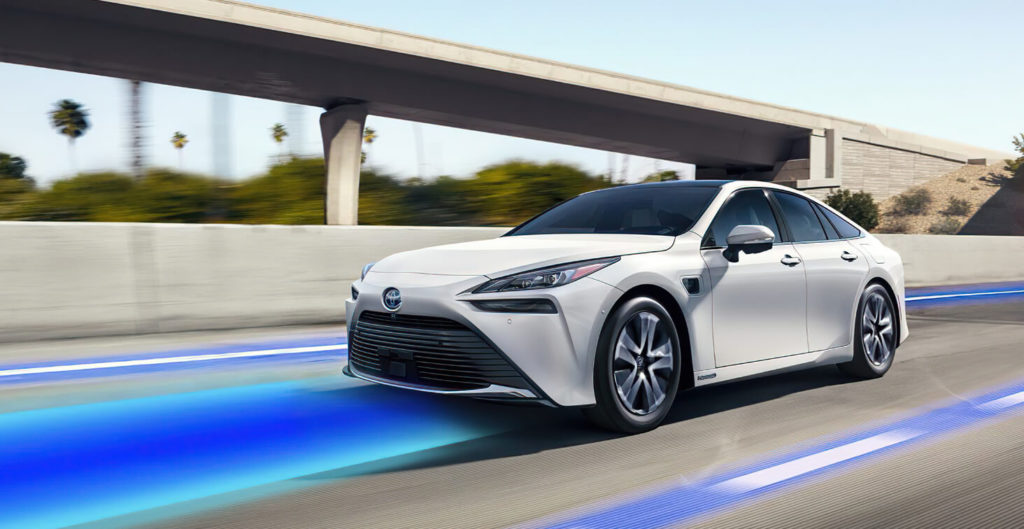
ADAS systems on newer Toyota vehicles and making use of Toyota Genuine Parts in a collision repair is critical to returning the functionality of the vehicle. Using Toyota Genuine Parts is the only way to ensure that your customer’s vehicle meets Toyota’s factory standards and quality after a repair and help to protect their safety when driving. Toyota Genuine Parts are made to fit the explicit blueprint of a Toyota vehicle, including the weight of the part. That’s because weight matters when you’re calibrating a vehicle — a non-genuine part may weigh too much or too little, which can affect the calibration and the performance of the ADAS in an emergency.
Contact your local Toyota dealer to assist you in selecting the correct parts for your next repair.
“A customer who has been in a collision is concerned about two things: safety and comfort. When you call the customer to say that the repair is complete, ask what their favorite features are on their Toyota, like heated seats or Bluetooth. Be sure that those comfort features are functioning properly as well before delivering the vehicle,”
—Mike Anderson
DISCLAIMERS AND FOOTNOTES
This training is just one resource available to Dealers and their associates. Collision Repair Centers are free to use or not use this resource. Of course, our dealers are responsible for all employment decisions relating to their employees including all recruiting, hiring, retention, development, discipline and termination decisions.
- Toyota Safety Sense™ effectiveness is dependent on many factors including road, weather and vehicle conditions. Drivers are responsible for their own safe driving. Always pay attention to your surroundings and drive safely. See Owner’s Manual for additional limitations and details.
- The TSS Pre-Collision System is designed to help avoid or reduce the crash speed and damage in certain frontal collisions only. It is not a substitute for safe and attentive driving. System effectiveness is dependent on many factors, including road, weather, and vehicle conditions. See Owner’s Manual for additional limitations and details. Feature availability may vary by vehicle and trim.
- Dynamic Radar Cruise Control (DRCC) is designed to assist the driver and is not a substitute for safe and attentive driving. System effectiveness is dependent on many factors, including road, weather, and vehicle conditions. Feature availability may vary by vehicle and trim.
- Lane Departure Alert (LDA) is designed to read visible lane markers under certain conditions and provide visual and audible alerts when lane departure is detected. It is not a collision-avoidance system or a substitute for safe and attentive driving. System effectiveness is dependent on many factors, including road, weather, and vehicle conditions.
- Automatic High Beams operate at speeds above 25 mph. Factors such as a dirty windshield, weather, lightning, and terrain limit effectiveness, requiring the driver to manually operate the high beams. Feature availability may vary by vehicle and trim.
- Lane Tracing Assist (LTA) is designed to read visible lane makers and detect other vehicles under certain conditions. It is only operational when DRCC is engaged.
- Do not rely exclusively on Road Sign Assist (RSA). It is not a substitute for safe and attentive driving. System effectiveness is dependent on many factors, including road, weather, and vehicle conditions. Feature availability may vary by vehicle and trim

